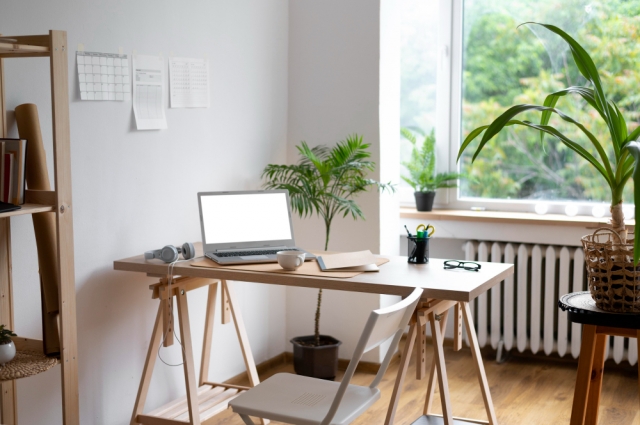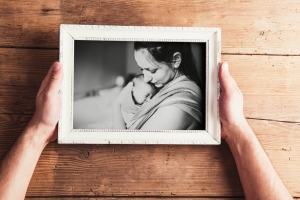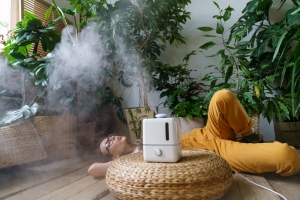Not long ago, the home office was a forgotten corner, an empty desk, a neutral wall, and perhaps a token houseplant. Fast forward to today, and remote professionals are rethinking everything about their work environments, especially what’s on their walls.
As the lines between work and home life continue to blur, one trend has emerged with surprising emotional and aesthetic power: art-inspired home offices. Professionals across industries, from law and finance to design and education, are turning to timeless artwork to transform their offices into spaces that reflect identity, spark inspiration, and command presence.
And they’re not choosing mass-market prints or generic motivational quotes. Instead, they’re investing in hand-painted art reproductions that capture the elegance and energy of history’s most iconic masterpieces.
From Function to Feeling: The Evolution of the Home Office
The global shift to remote and hybrid work wasn’t just logistical, it was emotional. In early 2020, as millions scrambled to set up workstations at home, priorities were purely functional: a chair, a monitor, a decent light source. But over time, as days turned into years, the emotional toll of uninspired environments became apparent.
Suddenly, we weren’t just working from home, we were living at work.
The sterile setups that once sufficed now feel soulless. And as our lives become increasingly screen-bound, the need for visual beauty, texture, and human expression in our physical surroundings has never been greater.
That’s where art comes in. More than decoration, it’s a tool for mental focus, emotional balance, and self-expression. And in today’s home offices, it’s a defining feature.
Professionals Turn to Timeless Art to Redefine Workspaces
What started as a niche design choice has become a mainstream movement: filling home offices with meaningful, museum-quality art. But these aren’t original Picassos or inaccessible gallery pieces, they’re meticulously painted reproductions that capture the look, feel, and soul of the real thing.
One company fueling this movement is 1st Art Gallery, known for offering hand-painted oil reproductions of thousands of iconic works from Renaissance portraits to Impressionist landscapes. Unlike printed posters or canvases, these artworks are created stroke by stroke, using real oil paints on canvas, often by classically trained artists. The result is a tactile, visually rich piece that looks and feels far more authentic than a flat print.
For professionals who care about the details, those who are seen daily on Zoom, or who crave visual stimulation while workingт, this quality matters.
What People Are Hanging—and What It Says About Them
The choice of artwork in a home office isn’t random. It’s a reflection of the person sitting beneath it. More than any bookshelf or branded mug, the art you hang behind your chair speaks volumes about your personality, taste, and even leadership style.
Let’s explore what professionals across sectors are choosing:
Educators and Thought Leaders
Opt for works that evoke contemplation and clarity. Think Rembrandt’s portraits, Vermeer’s quiet domestic scenes, or da Vinci’s sketches. These convey wisdom, patience, and tradition.
Designers and Creatives
Gravitating toward bold, expressive energy, creatives love works like Van Gogh’s Starry Night, Kandinsky’s vibrant abstracts, or Klimt’s ornamental flourishes. These pieces are not just inspiring, they’re a mood board in motion.
Executives and Consultants
Favor structured, symbolic art. Raphael’s School of Athens or Jacques-Louis David’s Napoleon Crossing the Alps suggest strategy, influence, and gravitas.
Tech Professionals and Developers
Often choose minimalist or futuristic compositions, Escher-like structures, clean Bauhaus pieces, or Da Vinci’s mechanical drawing, striking a balance between order and curiosity.
Therapists and Coaches
Lean toward serene landscapes, soft figurative work, or emotionally resonant scenes. Monet’s Water Lilies, Hopper’s introspective moments, or soulful portraits create safe, comforting spaces.
These choices aren’t just about taste. They're carefully made decisions designed to influence mood, tone, and perception in the workspace.
The Impact of Art on Mood, Focus, and Professional Presence
Art doesn’t just change how a room looks, it changes how it feels and functions. Studies have shown that thoughtfully curated visuals in workspaces can:
- Increase productivity by up to 17% (according to a study by Exeter University)
- Lower stress levels, particularly when nature scenes or calming imagery is used
- Enhance creative thinking through exposure to complex or emotionally charged visuals
- Improve the perception of professionalism in remote meetings based on visible background aesthetics
In short, art is more than eye candy. It’s a strategic tool for better work.
The Texture Advantage: Why Painted Reproductions Outshine Prints
A common question arises: Why not just use a high-res print?
The answer is texture. Depth. Authenticity.
A printed canvas, no matter how crisp, cannot replicate the play of natural light on oil paint, the raised texture of brushstrokes, or the vibrancy of pigment mixed by hand. A hand-painted reproduction becomes a living object in your space. It shifts in tone depending on the light. It invites a closer look. It holds a presence.
In the context of a video call, it adds a layer of dimensionality and refinement. In daily life, it becomes a visual companion that subtly changes the energy of the room.
Placement Strategy: Where and How to Display Office Art
Getting the right art is only part of the equation. Placement and scale play equally vital roles.
Here are a few tips interior designers swear by:
- Behind you (for video calls): Choose centered or slightly offset pieces that frame your head and shoulders without distracting from your face.
- Opposite your desk: A great spot for more personal or meditative art. Ideal for moments when you need to pause, breathe, or reflect.
- Gallery-style side wall: Curate a trio or grid of smaller works with consistent spacing for a modern, polished look.
- Above a bookshelf or credenza: Anchor the space with one horizontal statement piece for depth and structure.
Framing matters too. An ornate gold frame conveys tradition. A floating black frame reads sleek and modern. The right combination can elevate the art’s tone and your workspace.
The Democratization of Fine Art: Accessible, Yet Elevated
In the past, owning fine art was a privilege reserved for wealthy collectors. But the art reproduction industry has shifted that narrative. Today, a mid-level professional can bring the emotional resonance of Botticelli or Degas into their everyday life, without spending tens of thousands.
This accessibility doesn’t cheapen the art; it empowers the viewer. It transforms art from something viewed at a distance in a gallery into something lived with, reflected upon, and emotionally owned.
And when done with quality using oil on canvas, with true-to-original dimensions and color, it doesn’t feel like a knockoff. It feels like homage.
One Brushstroke at a Time: The Value of Slow, Handcrafted Detail
In a fast-paced digital world, there’s something grounding about watching a hand-painted piece take shape. Behind every finished reproduction is an artist interpreting each shadow, each highlight, and each curve just as the original master once did.
These reproductions aren’t printed overnight, they’re painted over several days or weeks. Each is unique. Each carries the signature imperfections and personality that make real art feel alive.
This slow craftsmanship brings a sense of purpose and permanence to the transient workday. When everything else is rushed, mass-produced, or digital, this one detail feels deeply human.
When Work Meets Meaningful Surroundings
The rise of art-inspired home offices isn’t about trend-following; it’s about intention. It’s about designing a space that encourages deeper focus, self-awareness, and even pride. It’s about elevating the workday with beauty that doesn't just match your style, but deepens your identity.
Art doesn’t have to be exclusive to museums. And it doesn’t have to be abstract. It can be emotional, grounded, historical, or wildly personal. What matters most is that it moves you.
So the next time you glance at your wall during a busy morning, ask yourself: Is what I see helping me become who I want to be?
In the new world of work, your office isn't just where you log in; it's where your mind lives.






